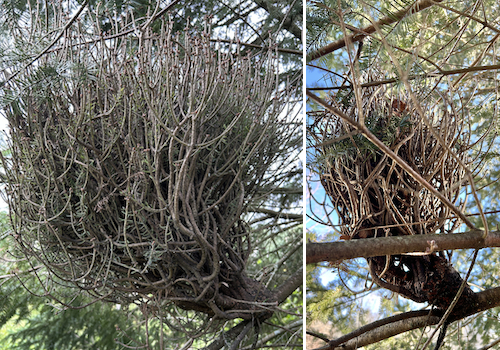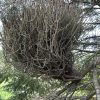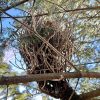Above: SOLF explains the odd growths sometimes found on trees and shrubs. (images cropped from photo contributed by SOLF)
[This (re-posted, edited)1 story is part of a special guest series focused on appreciating nature in Southborough, contributed by the Southborough Open Land Foundation (SOLF), a non-profit dedicated to preserving and stewarding natural resources here in town.]
There is an odd mutation that grows on trees and shrubs, particularly conifers, known as “Witch’s Broom.” There is an odd mutation that grows on trees and shrubs, particularly conifers, known as “Witch’s Broom.” Why? There are numerous causes; fungal, bacterial, viral, as well environmental ones. The mutation causes short, dense growth from a point in the host plant. From a distance it looks like a furry animal or a large nest. It was given the name “Witch’s Broom” in Medieval Europe because it resembles the end of a broom which led to the belief that a witch had stopped to rest in the tree at night.
There are people who collect these odd mutations as a hobby. Some of these collectors have nurseries because if these mutant growths are genetically based, they can become a source of new varieties of miniature trees. The growths could also stress the host tree by draining nutrients, causing damage or even the death of the tree.
For more information and photos, click here.
Want to learn more about SOLF, or volunteer or donate? Check out our site, we’d love to hear from you.
Deborah Costine, Trustee
SOLF – Southborough Open Land Foundation




